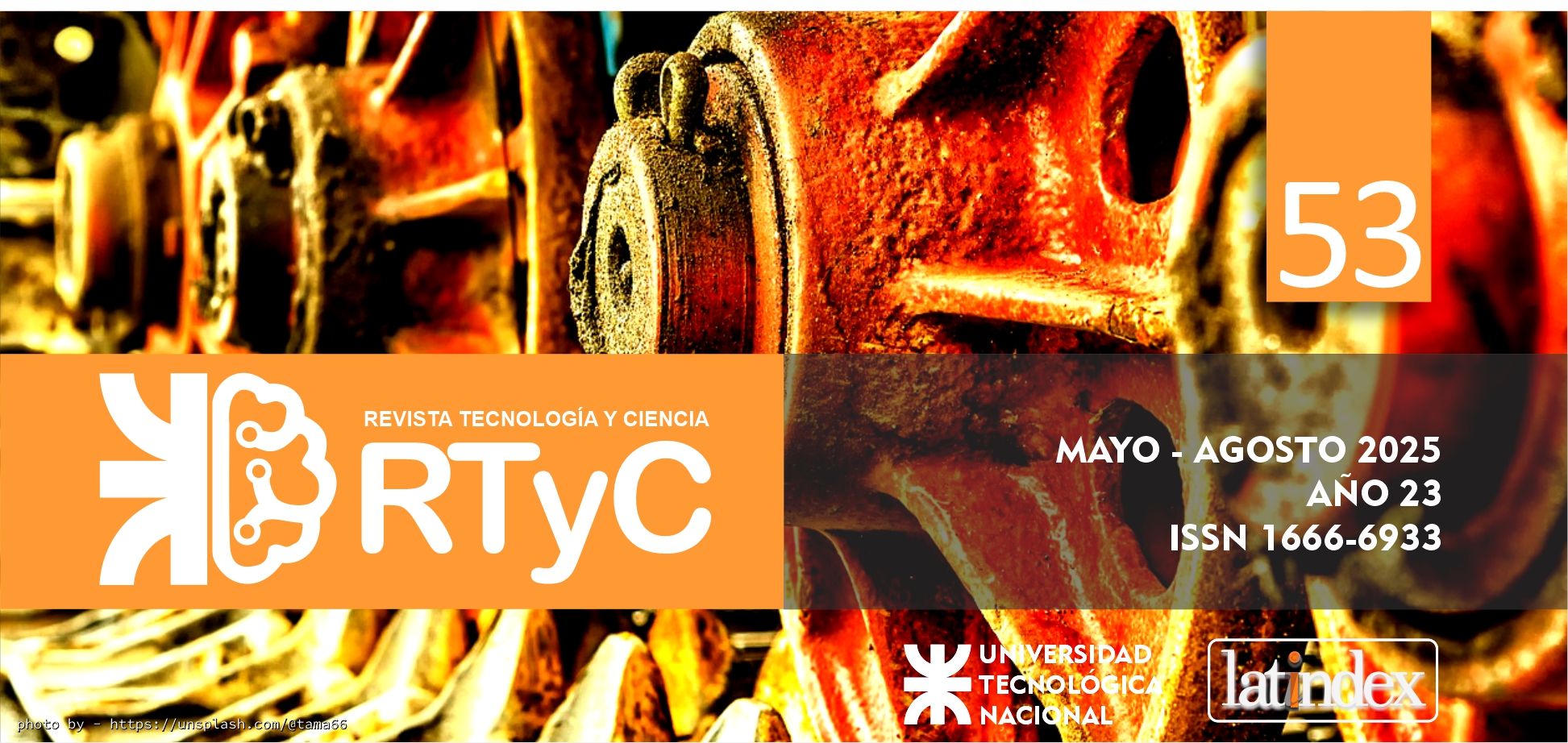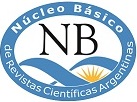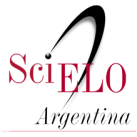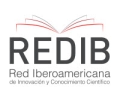Simulation Using a Multi-Agent System of the Evolution of a Conservative Contaminant in Soil by the Action of a Primary Producer: Application to a Geometric Phytoremediation Proposal
DOI:
https://doi.org/10.33414/rtyc.53.26-38.2025Keywords:
Ecosystems, Multi-Agent Systems, Contamination, PhytoremediationAbstract
This work presents a Multi-Agent System model that describes "vegetation" agents in the presence of a contaminant, with an initial homogeneous random distribution within a habitat represented by a circular habitat. Vegetation agents exhibit linear growth and senescence rates governed by local and global rules, resulting in emergent sigmoid net growth. Each vegetation agent produces a seed during a specific phase of its life cycle, based on density-dependent rules for each agent. These agents are characterized by their aerial and root biomass, regulated by the root/aerial part allometric relationship. Initially distributed randomly in patches with a certain surface density of total biomass, agents can grow, shrink, or even disappear from the habitat. The model incorporates intraspecific competition for resources through the root system. The model also simulates the uptake of the contaminant by the vegetation agent through the roots, its distribution and accumulation. Finally, the relationship between the seed production phase and the optimization of a contaminant extraction-based phytoremediation process is analyzed.
Downloads
References
Bustos, N. C., Sánchez, C. M., Brusa, D. H., Ré, M. A. y Britch, J. (2023). “Modelado Estocástico Alternativo a Lokta-Volterra mediante un Sistema Multiagente “. Revista Tecnología Y Ciencia, (47), 35–46. https://doi.org/10.33414/rtyc.47.35-46.2023
Bustos, N. C., Sánchez, C. M. y Britch, J. (23-10-2024) “Modelado mediante Sistemas Multiagentes de la redistribución espacial de un contaminante minoritario en suelo, por acción de la cobertura vegetal”. San Francisco UTN, F. R. Jornadas de Ciencia y Tecnología 2024. AJEA (Actas De Jornadas Y Eventos Académicos De UTN), (AJEA 44). https://doi.org/10.33414/ajea.1776.2024
Collado Fernández, D. (2002) " Movilizacion de contaminantes en terreno a partir de suelos contaminados".
Universidad de Granada, España.
Coyago, E. y Bonilla, S. (2014). "Absorción de plomo de suelos altamente contaminados en especies vegetativas usadas para consumo animal y humano". La Granja: Revista de ciencias de la vida, 23, 35-46.
Di Benedetto, A, y Tognetti, J. (2016). " Técnicas de análisis de crecimiento de plantas: su aplicación a cultivos intensivos". RIA. Revista de investigaciones agropecuarias, 42(3), 258-282. https://www.scielo.org.ar/scielo.php?script=sci_arttext&pid=S1669-23142016000300007&lng=es&tlng=.
García, I. y Dorronsoro, C. (2005). “Contaminación por metales pesados”. En Tecnología de Suelos. Universidad de Granada. Departamento de Edafología y Química Agrícola. Disponible en <http://edafologia.ugr.es>
Harper, J. L. (1977). Population Biology of Plants. New York, NY: Academic Press, 892 p.
Hunt, R. (1978) Plant Growth Analysis. Edward Arnold, London, 37.
Hermoso de Mendoza García, M., Solres Rodríguez, F., Pérez López, M. (2008). "Los mamíferos salvajes terrestres como bioindicadores: nuevos avances en toxicología". Observatorio Medioambiental, 11, 37-62.
Lasat, M. (2000)."Phytoextraction of metals from contaminated soil: a review of plant/soil/metal interaction and assessment of pertinent agronomic issues". J. Hazard Subst Res 2, 1–25.
Leopold, A. C. (1961). “Senescence in Plant Development: The death of plants or plant parts may be of positive ecological or physiological value”. Science, 134(3492), 1727–1732.doi:10.1126/science.134.3492.1727.
Miryeganeh, M. (2020) “Synchronization of senescence and desynchronization of flowering in Arabidopsis thaliana”. AoB Plants, Vol. 12, N° 3.
Pagnanelli, F., Moscardini, E., Giuliano, V. and Toro, L. (2004). “Sequential Extraction of Heavy Metals in River Sediments of an Abandoned Pyrite Mining Area: Pollution Detection and Affinity Series”. Environmental Pollution, 132,189-201.
Prieto Méndez, J., González Ramírez, C. A., Román Gutiérrez, A. D., y Prieto García, F. (2009). "Contaminación y fitotoxicidad en plantas por metales pesados provenientes de suelos y agua". Tropical and Subtropical Agroecosystems, 10,1-3.
Richards, F. J. (1959) “A Flexible Growth Function for Empirical Use”. Journal of Experimental Botany. Vol 10, N° 29. p. 290-30.
Rodríguez Eugenio, N., McLaughlin, M. y Pennock, D. (2019). "La contaminación del suelo: una realidad oculta". Roma, FAO.
Salazar, J. (2014).”Fitorremediación de suelos contaminados con metales pesados. Evaluación de especies nativas en la Provincia de Córdoba” Tesis Doctoral. Facultad de ciencias exactas, física y naturales (UNC), Córdoba, Argentina.
Sánchez, C., Bustos, N. Brusa, D., Re, M., Britch, J. “Modelado de la dinámica poblacional en un ecosistema simple compuesto de una cobertura vegetal y un consumidor primario mediante un sistema multiagentes”. San Francisco UTN, F. R. (2023). Jornadas de Ciencia y Tecnología 2023. AJEA (Actas De Jornadas Y Eventos Académicos De UTN), (AJEA 26).Disponble en: https://doi.org/10.33414/ajea.1301.2023.
Shah, V. y Daverey, A. (2020). "Environmental technology and innovation phytoremediation: a multidisciplinary approach to clean up heavy metal contaminated soil". Environmental Technology and Innovation, 18, 100774.
Smith, E. S., Christophersen, M. H., Pope, S., y Andrew, S. F. (2010). "Arsenic uptake and toxicity in plants: integrating mycorrhizal influences". Plant Soil. 327, 1-21.
Souza, F. J., Dolder, H. y Cortelazzo, A.L. (2005). "Effect of excess cadmium and zinc ion son roots and shoots of maize seedlings". J. Plant Nutr. 28, 1923-1931.
Vangronsveld, J. y Cunningham, S. (1998). “Metal-contaminated soils: In situ inactivation and phytorestoration”. Environmental Science. Disponible en: https://api.semanticscholar.org/CorpusID:129354283.
Yin, X., Goudriaan, J., Lantinga, E. A., Vos, J., Spiertz, H. J. (2003). "A flexible sigmoid function of determinate growth". Annals of Botany 91,3, 361-371.
Published
How to Cite
Issue
Section
License
Copyright (c) 2025 Natalia Carolina Bustos, Claudia Marina Sánchez, Javier Britch

This work is licensed under a Creative Commons Attribution-NonCommercial 4.0 International License.

















